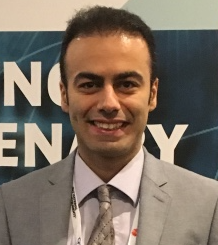Sequence modeling in content delivery with time-varying popularity
Time-variability of popular contents in communication networks necessitate the efficient utilization of resources to achieve a reliable and timely delivery of contents. During my PhD studies, I modeled the dynamism in the popular content using Markov process and then I studied the effect of different delivery schemes such as proactive or reactive resource utilization on the latency performance of system. The results are published in the following peer-reviewed articles:
-
S.M.Azimi, O. Simeone, A. Sengupta, R. Tandon “Online Edge Caching and Wireless Delivery in Fog-Aided Networks with Dynamic Content Popularity,” Accepted for publication in IEEE Journal on Selected Areas in Communications, 2018.
-
S.M.Azimi, O. Simeone, R. Tandon “Content Delivery in Fog-Aided Small-Cell Systems with Offline and Online Caching: An Information—Theoretic Analysis,” in Entropy, vol. 19, no. 7, July 2017.
-
S.M.Azimi, O. Simeone, A. Sengupta, R. Tandon “Online edge caching in fog-aided wireless networks,” in IEEE International Symposium on Information Theory (ISIT), Aachen, Germany, June 2017.
-
S.M.Azimi, O. Simeone, R. Tandon “Fundamental Limits on Latency in Small-Cell Caching Systems: An Information-Theoretic Analysis,” in IEEE Global Communications Conference (GLOBECOM), Washington D. C., USA, Dec 2016.
Parallel processing using map-reduce computation
Running computationally intensive tasks by a mobile agent/device suffers from large delay and inefficient resource utilization. In this project, I studied parallelizing the computation task using map-reduce approach while providing different service levels. The result is published in the following conference:
S.M.Azimi, O. Simeone, O. Sahin, P. Popovski “Ultra-reliable cloud mobile computing with service composition and superposition coding,” in 2016 Conference on Information Science and Systems (CISS), Princeton, NJ, USA, March 2016.
Resource management using game theoretic analysis
In communication networks, service providers and end-users have contradicting goals. The former seeks to attain the highest income per provided resource while the latter attempts to obtain the lowest price per service. Using game theoretic analysis, I modeled the interaction between the service providers and end-users using competition or collaboration based schemes. The results are published in the following peer-reviewed articles:
-
S.M.Azimi, M. H. Manshaei, F. Hendessi “Cooperative primary–secondary dynamic spectrum leasing game via decentralized bargaining,” Springer Wireless Networks, vol. 22, no. 3, April 2016.
-
S.M.Azimi “Pareto optimal primary–secondary user dynamic spectrum leasing game,” in IET Electronics Letters, , vol. 50, no. 12, June 2014.
My complete publication list is available in Google Scholar Profile.

